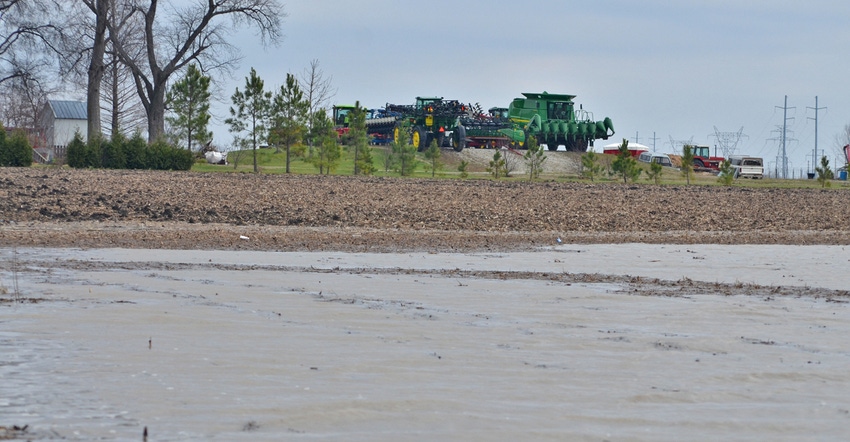June 24, 2019

Many farmers will file for prevented plant crop insurance payments this year after record-setting May rainfall and flooding. Now they face decisions on what to do with unplanted fields.
Cover crops are one option. But Rob Myers, a University of Missouri Extension agronomist, says there are nuances to complying with crop insurance regulations.
"If fields are not planted to their intended commodity and a prevent plant insurance payment is collected, farmers then need to decide what to do with that field," Myers says.
He encourages farmers to plant something on those fields to suppress weeds, protect soil from erosion and maintain the soil biology.
Missouri farmers are growing accustomed to planting cover crops. According to the 2017 USDA Census of Agriculture, farmers in the state planted more than 840,000 acres of cover crops in 2017. However, planting may come sooner this year.
Normally, most Missouri cover crops are planted in the fall, but this year Myers expects to see a lot of prevented plant fields with cover crops planted in midsummer.
Before planting
Farmers need to know the rules for federal crop insurance to decide on the best option for their operation, Myers says.
"If the cover crop serves only to protect and improve the soil, you can plant them without any concern about affecting payout of prevent plant insurance payments," he explains.
There are no crop insurance restrictions on the use of a cover crop this summer, as long as it is not hayed or grazed. USDA Risk Management Agency rules prohibit haying or grazing cover crops until after Nov. 1 for full payment.
A provision allows 35% payment on the prevented plant crop insurance if you wait to plant the cover crop for forage use after the late-planting period for that commodity, Myers says.
“A farmer considering cover crops for haying or grazing would need to evaluate the worth of the cover crop forage versus the reduced insurance payment,” he says. “They also need to be sure they are past the end of the late-planting period on cover crop seeding. Otherwise, the insurance payment becomes zero."
Look for incentives
Myers also advises farmers to be aware of options for cover crop incentive payments from the Natural Resources Conservation Service or the Missouri Soil and Water Conservation Program. Each agency offers programs and incentives only at certain times of the year.
There currently is a special sign-up through July 19 to receive Environmental Quality Incentives Program funds for cover crop planting on flooded cropland in the 13 Missouri counties that have been declared federal disaster areas. Check with your local NRCS or conservation district office for details.
Source: The University of Missouri Extension, which is solely responsible for the information provided and is wholly owned by the source. Informa Business Media and all its subsidiaries are not responsible for any of the content contained in this information asset.
You May Also Like




